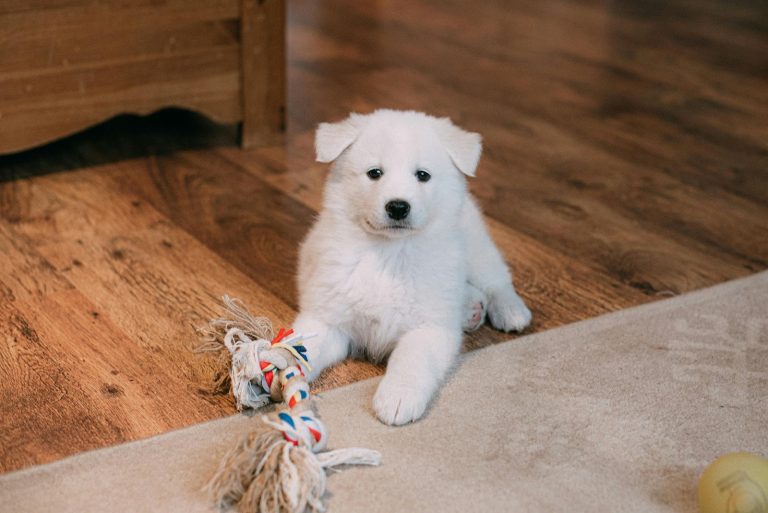7 Keys to Reading Your Dog’s Body Language
Dogs are constantly trying to communicate with us using their body and space.

Want to know how to tell what your dog is thinking?
First, you need to understand that dogs communicate with one another through body language.
They speak primarily through various forms of nonverbal communication and social cues established thousands of years ago.
We humans speak with one another in a verbal language that dogs can’t comprehend, but dogs assume we are just like them — communicating using our bodies.
Dogs are constantly trying to communicate with us using their body and space. To understand what they are saying, we need to learn to “read” our dog.
In order of importance, here are the keys to reading your dog’s body language.

Don’t leave your pet’s safety to chance
Sign up for Petful recall alerts today.

7 Keys to Reading Your Dog’s Body Language
1. Energy Level
The energy level indicates the state of arousal that the dog is in. This is the most important thing to notice.
Indicators of a high-energy dog include:
- Tail-wagging (this doesn’t necessarily mean the dog is happy — it just means they have a lot of energy)
- Barking
- Muscle tremors
- Faster reactions than normal
- Walking faster than normal
A dog with low energy reacts slowly and will want to stop and rest whenever possible.
The state of arousal won’t tell you anything about the dog’s confidence level, but a high-energy dog can react quickly. If they are showing intent to bite with a short mouth growl (a threatening growl showing only the front teeth), then steer clear.
Knowing the dog’s energy level can help you diagnose what to expect from the dog, especially in training situations.
2. Body Axis
The body axis has to do with which direction dog is leaning:
- If a dog is straight up and down, they are showing you they are confident.
- A dog leaning away from a stimulus is most likely frightened. Do not approach.
A good time to observe this “stance” is at a dog park.
Dogs greeting one another will typically do so at the withers, or shoulder bone. The submissive dog will stand still as the dominant, confident dog approaches at their shoulder, forming a “T.”
Reading the body axis can help you understand how confident your dog is in any particular situation.
3. Stride
- A dog who is walking with a tall stride is confident — sometimes overly confident — and could be challenging you or another dog.
- As a dog gets less confident and more insecure, they will begin to “slink” toward the ground.
- A dog who lifts one paw while sitting is either recognizing that you are dominant or showing a sign of insecurity.
- A standing paw lift is a sign of indecision — the dog is thinking about what to do next.
4. Muscle Tone
The muscle tone of a dog can tell you how tense your dog is:
- A confident or calm dog will have loose, relaxed muscles.
- As the dog gets more nervous, their muscles will tighten up.
5. Neck
The position of the neck on the body or neck carriage can tell you more about the dog’s intentions and confidence level:
- A confident dog will have a high neck carriage.
- When a dog is hunting or herding, they will lower their head to appear submissive.
- If the hackles are up or the dog has piloerection, they are trying to appear bigger and are telling you, “Go away.”
6. Head
All parts of the head are to be read separately, but they all fall under one category — and they all have the same level of importance:
- Direct eye contact is seen as a challenge, and typically the submissive animal will break the eye contact first. The pupils will dilate if the dog is angry and is getting aggressive.
- Ears up and pointed forward could mean alert, friendly, curious, eager, excited, guarding or aggressive, so obviously they are not the best indicator of a dog’s mood.
- If the dog’s ears are flat against the head, they are showing fear and/or submissive behavior.
7. Tail
The height of the tail is what we are looking for when reading the dog’s tail:
- An alpha male or female will hold the tail above the level of the spine.
- As the dog’s insecurity increases, the tail will lower.
When reading a dog’s body language, go through the 7 keys above in your head. You’ll be in a position to better understand the animal’s confidence level and intentions — and you’ll have a better idea of what to expect.

Common Dog Body Postures
Now that you’ve taken a quick gauge of your dog’s body language, let’s dive in a little deeper and explore a few different scenarios of a dog’s state of mind.
Relaxed
- A dog who is standing with a relaxed body posture will be leaning neither slightly backward nor forward.
- The corners of their mouth will be relaxed, and they will be holding their tail down and head high.
- The ears may be up but typically not forward.
If the dog is relaxed, they are comfortable with their environment. They will usually be in this state at home.
Greetings
A vigorously wagging tail and a big smile on your dog’s face when you come home from a hard day at work are part of the joy of dog companionship.
Some dogs even vocalize with what sounds like little whimpers of delight. Others run around in circles and jump up on you, as if you were gone for years.
Dogs greet other dogs with certain rituals as well:
- If the dogs have never met, they will often give each other a moment to see if they want to get closer.
- A good socialized dog will read the other dog’s signals, then proceed to sniff and maybe invite play by crouching with their rear end sticking up in the air and a wagging tail.
- Dogs who want to show dominance can be a little more aggressive and do things like try to mount the other dog to show who is boss. If your dog is like that, there are many ways you can distract the dog and show them that this isn’t good pack behavior.
Alert
- The alert dog will be indicating interest by appearing to be standing on their toes.
- The ears will be forward, the tail straight out and the mouth closed.
What happens next will depend on how the dog reacts to the stimulus that is alerting them. This posture is what the dog shows right before they do something — it’s the prelude to another behavior.
You should be able to recognize this posture and understand that the dog may become aggressive or defensive as their next action.
This is a good time to reorient the dog to you and redirect their focus if this commonly happens with your dog.

Anger
Yes, dogs can get angry.
According to Patricia B. McConnell, PhD, in her book For the Love of a Dog, even good dogs get mad.
The expression of a dog’s anger shows in the “closed mouth, lips pushed forward, and the eyebrows move together and downward. In dogs this is called an offensive pucker,” she says.
Offensive Threat Posture
It’s very important that you be able to recognize an offensive threat posture and quickly react to it.
- Your dog’s tail will be up and stiff, hackles will most likely be up on their back, and they’ll have a wrinkled nose.
- The ears and corners of the mouth will be showing, and the dog will be standing tall and slightly forward.
- A growl or snarl will most likely accompany this posture. Front teeth may be bared.
- The slightest provocation may cause this dog to attack.
Active Submission
A dog who is submitting is allowing the dominant person or dog to be in control.
You may see this during training if the dog is confused, receives too strong of a correction, or senses that you are tense or angry.
- The tail will be down and ears back.
- The dog’s forehead will be smooth, and their body will appear to be low to the ground.
Stress
The best indicator of dog stress is stress panting.
You can differentiate a stress pant from a regular pant easily: If the pupils are dilated and your dog is having short, rapid breaths with panting, then they are stressed.
Other signs of stress in a dog:
- The tongue may be long and coming out of the dog’s mouth.
- The tail will be down and ears back.
- The body will be lowered and the paws will be sweating.
Try to recognize some of these common body postures in your dog. Learning the body language will make your relationship grow because you will be able to understand your dog more clearly.







